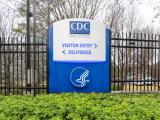Dec 9, 2008 (CIDRAP News) – This year's report card from Trust for America's Health (TFAH) on state and national public health emergency preparedness shows some signs of progress along with major gaps, sagging funding, and worry that the current economic crisis will bring deeper spending cuts.
The report finds that "progress made to better protect the country from disease outbreaks, natural disasters, and bioterrorism is now at risk, due to budget cuts and the economic crisis," TFAH, a nonprofit, nonpartisan advocacy group based in Washington, DC, said in a news release. "In addition, the report concludes that major gaps remain in many critical areas of preparedness, including surge capacity, rapid disease detection, and food safety."
TFAH found that more than half of states met seven or fewer of 10 key preparedness criteria used in this year's assessment. The states performed best on planning for distribution of emergency medical products from the Strategic National Stockpile: All 50 have an adequate plan. On the other hand, 26 states lack laws offering liability protection to organizations that provide relief services in public health emergencies.
The 124-page report, titled "Ready or Not? Protecting the Public's Health from Diseases, Disasters, and Bioterrorism," was cosponsored by the Robert Wood Johnson Foundation (RWJF), based in Princeton, N.J.
Nation called complacent
Despite a recent history of terrorist attacks and major hurricanes, the report warns, "America has grown complacent about public health emergency preparedness."
At a news teleconference today, Dr. Jim Marks of the RWJF commented, "It seems like we act more like they [disasters] are snooze alarms. They get our attention briefly, but we drift back into complacency before we've accomplished enough."
The report says federal funding for state and local preparedness has dropped more than 25% since fiscal year 2005, which marked the peak of post–Sep 11 preparedness spending. TFAH Executive Director Jeff Levi, PhD, said federal funding this year is $704 million, down from $919 million in 2005.
In addition, the report notes that no more supplemental funding is available for state and local pandemic influenza preparedness, as $600 million that was appropriated for that purpose in 2006 has all been spent.
On top of federal cuts, 11 states and Washington, DC, trimmed their public health budgets in the past year, according to the report. Thirty-three states are facing budgets deficits in 2009, and 16 states are expecting deficits in 2010, it says.
"This report, the sixth annual edition, finds that on some levels, significant progress has been made in the nation's preparedness," the report states. "There are important areas, however, where continued, concerted action is needed." And in many areas, it adds, a "lack of transparency" makes it hard for Americans to know how prepared the nation is.
Preparedness varies by state
Differences in preparedness among the states mean that "where one lives still determines how well one is protected," TFAH says. "Until all states measure up, the United States is not safe."
Five of the state preparedness indicators TFAH used this year were not on last year's list, Levi said at the press conference. The 10 criteria, with the numbers of states that passed or failed, are:
- Ability to distribute supplies from the Strategic National Stockpile: all states passed
- Purchase of 50% or more of the state's share of federally subsidized antiviral drugs to stockpile for a flu pandemic: 16 states fell below this level
- An intrastate courier system for delivering lab specimens: 24 states and Washington, DC, had none
- Ability of the state's public health lab to meet the requirements of the state's pandemic plan: three states—California, Kansas, and Ohio—failed
- A disease surveillance system that is compatible with the Centers for Disease Control and Prevention's (CDC's) national system: six states (Connecticut, Kansas, Minnesota, Mississippi, Nevada, and Utah) failed
- Liability protection for healthcare workers who volunteer in a public health emergency: eight states failed
- Liability protection for organizations that provide services in a health emergency: 24 states failed
- A coordinator for the state's Medical Reserve Corps: 17 states don't have one
- A record of having identified the causes of at least 44% of foodborne disease outbreaks, which is the national average: 20 states and DC identified fewer
- Steady or increased public health funding from fiscal years 2006-07 to 2007-08: 11 states decreased such funding
Five states—Louisiana, New Hampshire, North Carolina, Virginia, and Wisconsin—met all 10 preparedness criteria. On the other end, Arizona, Connecticut, Florida, Maryland, Montana, and Nebraska tied for the lowest score—five out of ten.
Although six states have surveillance systems not compatible with the CDC's, most of them meet two of the three compatibility criteria and are making progress toward meeting the third, the report says.
It cautions that TFAH was able to compare the states only where data were available for all states. "Many states have taken action in other areas of preparedness or may be in the process of increasing certain capabilities not reflected in this report," it states.
Despite the lack of transparency in many preparedness areas, the CDC's February 2008 report on state preparedness efforts was "an important step forward for transparency and accountability," the report says.
Recommendation: Clarify agency roles
In addition to the state assessment, the report includes chapters on federal preparedness, hospital preparedness, and a set of other issues, such as at-risk populations, children, behavioral health, and the public health work force. It concludes with a lengthy set of recommendations. Among them:
- Federal, state, and local funding for preparedness should be restored to 2005 levels.
- The Obama administration should clarify the relative preparedness roles and responsibilities of the departments of Health and Human Services and Homeland Security.
- Federal, state, and local governments and healthcare providers must do a better job of addressing altered standards of care, liability protection, and surge workforce issues.
- Preparedness should be incorporated into healthcare reform.
- The federal government should provide for emergency health insurance coverage and paid sick leave during a flu pandemic or bioterrorist attack.
See also:
TFAH news release
http://healthyamericans.org/newsroom/releases/?releaseid=150
Full text of TFAH report
http://healthyamericans.org/assets/files/bioterror-report-2008.pdf
Dec 18, 2007, CIDRAP News story "Funding cuts said to threaten states' preparedness progress"


















